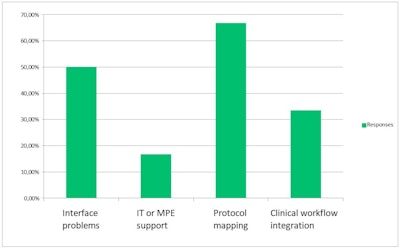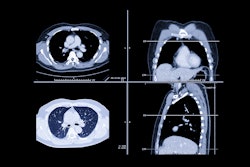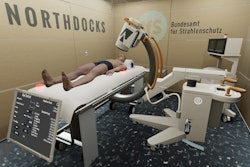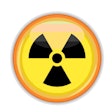Dose management systems (DMSs) are considered important for ensuring radiation protection for patients, but responses to a questionnaire distributed by the EuroSafe Imaging Clinical Dosimetry and Dose Management Working Group show that there are significant differences and challenges in their implementation.
To assess how these systems are being used and to get an overview of challenges associated with implementing DMSs in the EU, the group sent a questionnaire created using SurveyMonkey to five randomly selected ESR members per country (244) as well as to all Imaging Stars (IS) facilities (128). Each question was designed to allow four to seven multiple-choice responses, with some having fields for free-text responses.
Led by Prof. Reinhard Loose, PhD, of the University of Erlangen in Germany, the authors presented their findings in an ECR 2025 poster. They analyzed the results in terms of modality, frequency of radiological procedures, involvement of medical physics experts (MPEs), legal requirements, and local issues.
The responses came from 26 countries; 62% of the responses from DMS users came from Western Europe, and 38% of the DMS users’ responses came from Eastern Europe.
The responses suggested that IS facilities had a markedly higher availability and involvement of MPEs, according to the group: from IS facilities, 51% of the responses came from MPEs and 26% from radiologists; from non-IS facilities, 16% of the responses came from MPEs and 72% from radiologists. DMS users reported higher frequency of examinations, ranging from 100,000 to over 300,000 per year, while the exam frequency for non-DMS users ranged from 10,000 to 30,000.
The primary challenges respondents said that they faced were modality interfaces (specifically the lack of DICOM interfaces), protocol (procedure) names, clinical workflow integration, and inadequate IT/MPE support.
 Reported main difficulties of users when installing a DMSCourtesy of EuroSafe Imaging Clinical Dosimetry and Dose Management Working Group and presented at ECR 2025.
Reported main difficulties of users when installing a DMSCourtesy of EuroSafe Imaging Clinical Dosimetry and Dose Management Working Group and presented at ECR 2025.
The working group intends to use the survey results to “provide further advice for installation and improvement” of DMSs, noting that the disparities in these responses indicate that distribution of the systems and support for same is insufficient.
According to its webpage, the EuroSafe Imaging Clinical Dosimetry and Dose Management Working Group has the stated mission of developing “realistic approaches to support the fulfilment of dose management and dosimetry requirements of the Basic Safety Standards Directive [Directive 2013/59/EURATOM]” through providing guidance and papers.
In the near future, the working group said that it will provide practical recommendations on DMS implementation as well as exploring ways in which AI could assist.
Full details of the survey are available on the ECR 2025 posters' website. The co-authors were Eliseo Vaño, Josefin Ammon, Jonas Seth Andersson, Hugues Brat, Boris Brkljačić, Katrina Caikovska, Riccardo Corridori, and John Damilakis.



















